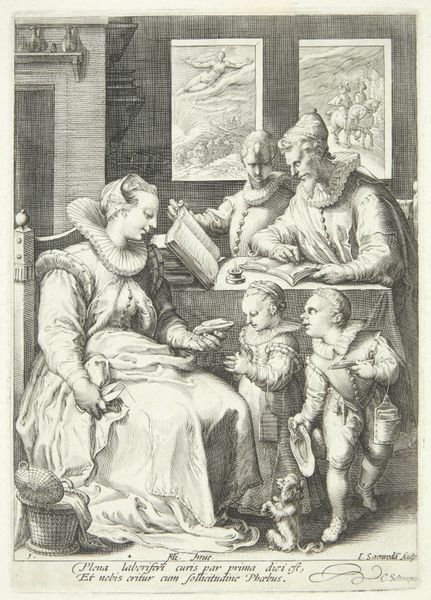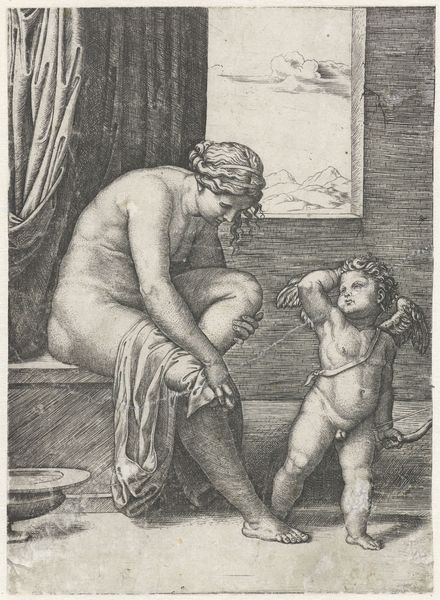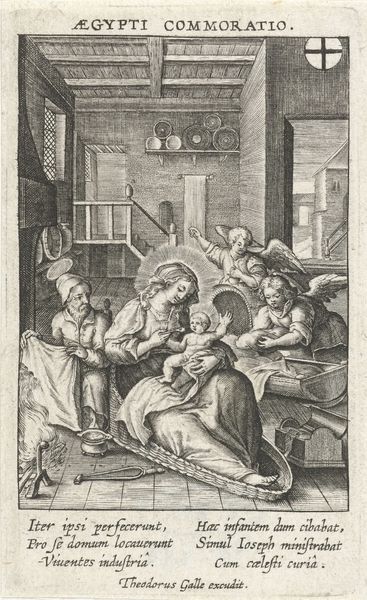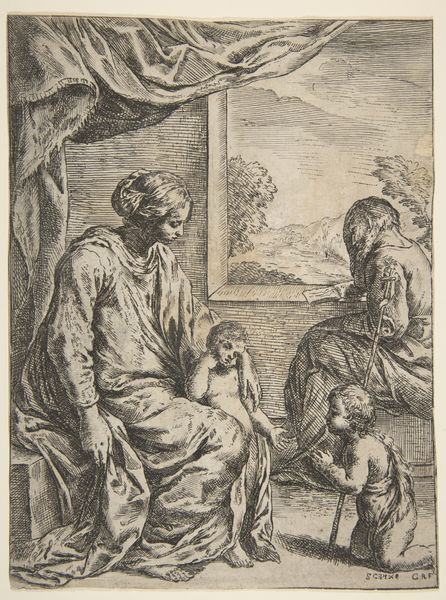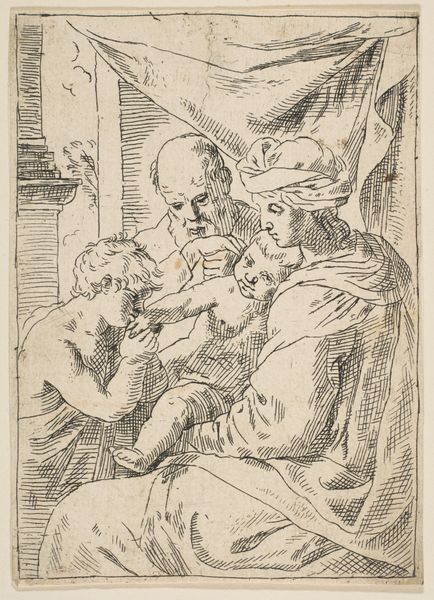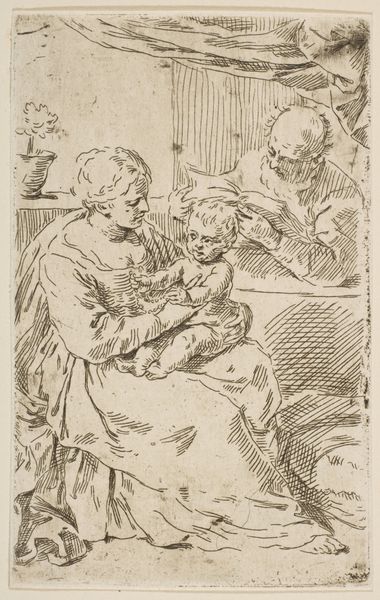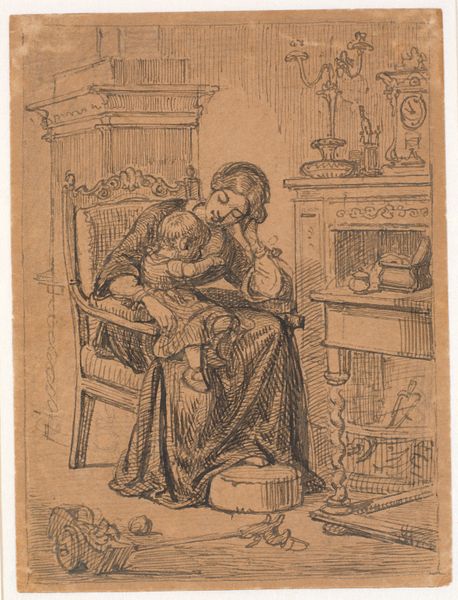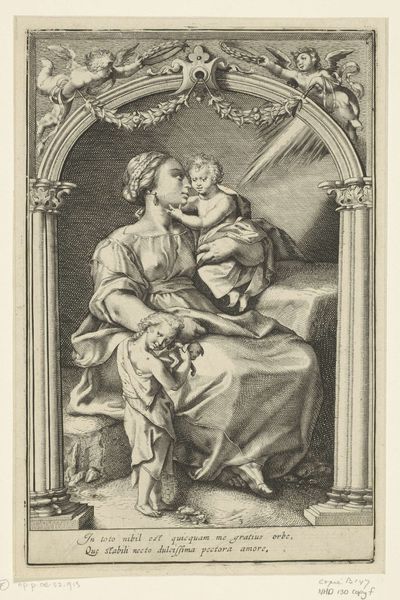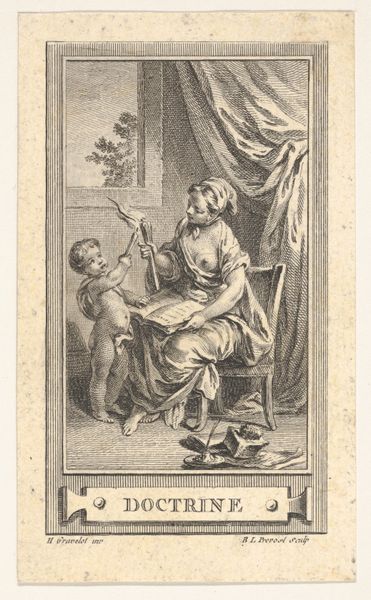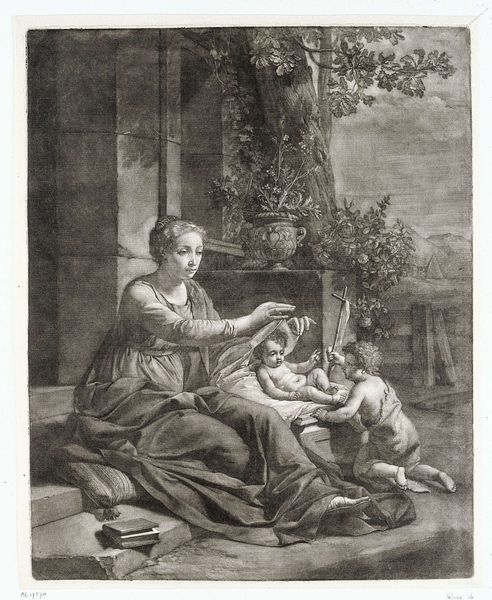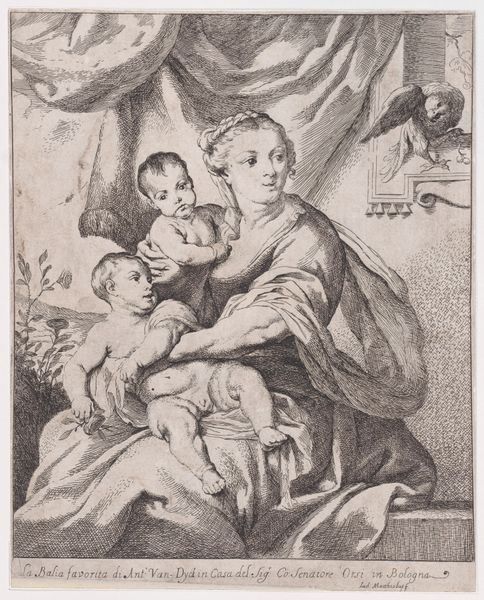
drawing, print
#
portrait
#
drawing
# print
#
figuration
#
genre-painting
#
italian-renaissance
#
virgin-mary
Dimensions: Sheet: 7 11/16 in. × 6 in. (19.6 × 15.2 cm) Plate: 4 x 3 3/8in. (10.1 x 8.5cm)
Copyright: Public Domain
Editor: This is Barthel Beham’s "The Virgin at the Window," created sometime between 1502 and 1540. It's a print, a drawing really, and quite detailed. It shows the Virgin Mary breastfeeding Jesus in a domestic setting, overlooking a townscape. I find the intimate depiction of motherhood set against the urban background rather interesting. What strikes you most about this print? Curator: I am drawn to the material reality of this print. Think about the paper itself, the ink used, and the laborious process of engraving the plate. These prints circulated widely; their production and distribution speaks volumes about the social and economic context of the time. Editor: So, you see it more as a product of its time than just a religious image? Curator: Exactly! Consider the labor involved in producing these images and how that connects with their consumption. Was this print meant for private devotion, or was it produced for broader circulation and profit? And how might that affect its reception? Editor: That's a perspective I hadn't fully considered. How does the material influence our understanding of the subject matter? Curator: Well, a print allows for reproduction. This allows us to contemplate on how images were commodified and circulated in the early 16th century. Doesn’t that level of access change the nature of what’s being depicted? Also, think of the class implications; only certain social classes had access to paintings or tapestries, for example. The relative ease of printing makes art, or in this case the idea of Virgin Mary, much more accessible. Editor: I guess focusing on materiality highlights the art world's economy itself. Curator: Precisely. Understanding the materiality demystifies the artistic genius and centers our understanding to cultural dissemination. Now that you see the artwork as an outcome of materiality and the society that influenced the work, does that alter your reading of its content? Editor: Definitely. I see the print not just as a devotional image, but as a commercial object embedded in a complex network of production and consumption. Curator: Wonderful! Now we're engaging with art history on multiple levels.
Comments
No comments
Be the first to comment and join the conversation on the ultimate creative platform.
